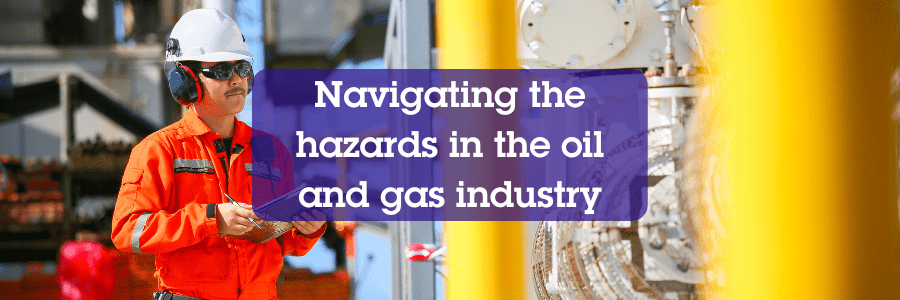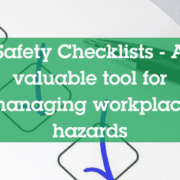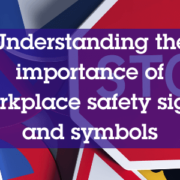Navigating hazards in the Oil and Gas Industry
Navigating the hazards: A guide to Health and Safety in the Oil and Gas Industry
The oil and gas industry plays a key role in meeting the world’s energy demands, providing fuel for transportation, power generation, and numerous industrial processes. However, with the numerous benefits come inherent hazards and risks that pose significant challenges to the safety of workers, the environment, and surrounding communities. This blog aims to explore and shed light on the common hazards in the oil and gas industry, emphasising the importance of stringent health and safety measures to mitigate the associated risks. Learn how to navigate hazards with the NEBOSH Oil and Gas Certificate.
Piper Alpha Oil and Gas Disaster
Let us consider oil and gas offshore exploration and drilling activities. Poignantly, we will start by looking at the Piper Alpha disaster. The disaster is one of the most catastrophic events in the history of offshore oil and gas exploration. On July 6, 1988, the Piper Alpha platform, located in the North Sea, suffered a series of explosions and subsequent fire, resulting in the loss of 167 lives and causing widespread environmental and economic devastation. This tragic incident brought about significant changes in health and safety regulations and practices within the oil and gas industry, reshaping the approach to offshore operations worldwide.
In the UK, the recommendations from the Cullen Inquiry culminated in introducing the Offshore Installations (Safety Case) Regulations 1992. This legislation requires operators to submit safety cases to the Health and Safety Executive (HSE) for approval before starting or modifying offshore operations. The safety case details how risks would be managed and controlled. Another significant change involved the change in enforcement. Prior to Piper Alpha, offshore oil and gas regulation and enforcement was the responsibility of the Department of Energy (DoE). Following the Piper Alpha incident, there were significant changes to the regulatory framework, with the HSE becoming the primary regulator responsible for enforcing safety legislation in the UK’s offshore oil and gas industry.
Significant offshore hazards and risks include:
Fire and explosion: Exploration involves handling large amounts of flammable hydrocarbons, which can lead to fire and explosion if ignition sources are poorly controlled.
Toxic substances: In addition to the trace metals (such as lead, mercury, and cadmium) found in crude oil, other toxic metals can be released into the environment during drilling, extraction, and refining processes, posing risks to human and environmental health.
Oil and gas deposits can contain naturally occurring radioactive materials (NORM). During extraction and production, these materials can be brought to the surface and may require special handling and disposal procedures to prevent environmental contamination.
Perhaps the biggest offshore (and indeed refining) toxic threat is Hydrogen Sulphide (H2S). Found in both natural gas and crude oil, exposure to high levels of H2S can be fatal.
Overpressure and Blowouts: Drilling activities can involve high pressures, and wells are often located deep below the ocean floor. The Deepwater Horizon blowout occurred in the Gulf of Mexico on April 20, 2010, during a (cement) well capping operation. The blowout resulted in the deaths of 11 workers, a catastrophic oil spill, and severe environmental and economic consequences.
The following factors played a key part in the disaster:
- Failure of the blowout preventer (BOP): The BOP was not designed to operate when a blowout reached full pressure.
- Failure of the cement plug: The cement job, meant to seal the well and prevent the migration of hydrocarbons, was not successful, allowing oil and gas to flow into the wellbore. Failure to properly evaluate the quality of the cement job was a contributing factor to its failure.
- Poor ignition control: The investigation identified the engine room as the probable source of ignition. The engine room was not properly electrically classified as it was thought that a gas release could not reach the engine room.
- Failure to quickly contain the oil spill: Some 4 million barrels of oil leaked into the Gulf of Mexico until it was finally capped 87 days later. The spill was the largest in the history of marine drilling operations. It had severe environmental consequences, affecting marine life, coastal ecosystems, and local economies. The BP emergency oil spill response plan was considered inadequate for the disaster’s scale.
Hazards Associated with Refining
Let us now consider the next critical phase of the crude oil process – refining. Crude oil is a complex mixture of different hydrocarbons, impurities, and other compounds. Refining is essential to separate and convert these components into more valuable and usable products, such as gasoline, diesel, jet fuel, and heating oil, as well as petrochemical feedstocks to produce chemicals, lubricants, and other industrial materials.
Complex refinery processes come with inherent hazards and risks. Refining involves using high temperatures, high pressures, and vacuum to separate crude oil into usable products. Like offshore activities, the flammable nature of crude oil and its derivatives poses a significant risk of fires and explosions if not properly controlled. In addition, refining processes involve using various toxic chemicals and compounds, including benzene, chlorine, ammonia and, of course, the ever-present risk posed by hydrogen sulphide. The writer recalls an incident in the 1980s where two mechanical fitters (known to the writer) were working on a refinery flare line and exposed to high concentrations of H2S. Tragically, both fitters lost their lives.
In the United Kingdom, the Control of Major Accident Hazards (COMAH) Regulations is a regulatory framework designed to prevent and mitigate the impact of major accidents and hazards involving dangerous substances, including those in refineries. Refineries, being facilities that handle various hazardous substances, are subject to stringent safety measures under COMAH. Like the offshore Safety Case regime, under COMAH, refineries are expected to prepare and submit to the regulator (the HSE) for approval of safety reports for new and modified processes. These reports provide a detailed analysis of the major accident hazards, the safety measures in place, and emergency response arrangements. The reports are used to assess and ensure that the facility meets the necessary safety standards.
Like the offshore oil and gas industry, the refining sector has not been without its problems over the years. In 2005, a massive fire and explosion occurred at Texas City Refinery in Texas City, Texas, USA, because of a process start-up that went wrong. The incident resulted in a massive explosion and fire, causing significant damage and the tragic loss of life of 15 workers.
Significant hazards and their threats
In summary, the oil and gas industry has significant risks associated with its activities. These risks threaten human life and the environment and can result in significant economic and reputational consequences for companies operating in the industry. Strict safety measures, including regulatory compliance and a strong health and safety culture, are crucial for mitigating these inherent dangers.









